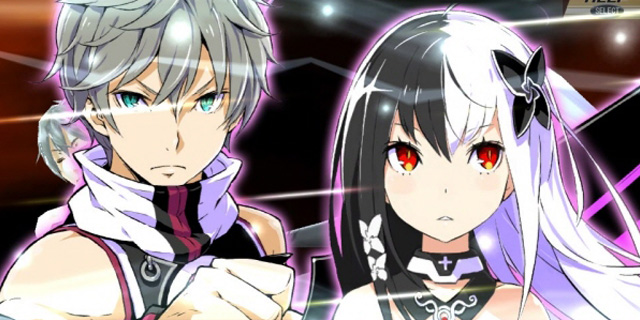
The JRPG is going through an oddly fruitful point in its life right now. On one hand, it is undeniable that the genre lacks the cachet that it had during the 32-bit era, and it is doubtful it will ever reclaim that. However, publishers like Atlus, Nippon Ichi and XSEED — long regarded as some of the biggest risk-takers in publishing — have taken it upon themselves to ensure that many of the more offbeat titles in the genre actually make it outside of Japan. That has never happened on this scale before, and it is the only way that a game like Conception II would have ever seen the light of day in English-speaking territories.
Conception II is a turn-based JRPG from Spike Chunsoft, following in the footsteps of the late-release PSP original that never saw a release in the west. You may recognize Chunsoft as being the developer that Enix chose to help make the first five Dragon Quest games. It is also known for creating the Shiren the Wanderer and Pokémon Mystery Dungeon series. Needless to say, it has quite the pedigree in the genre, and Conception II has a lot to live up to.
In the game, you play as a new student at the Aterra military academy, who is quickly determined to be a particularly gifted individual for combat. You eventually are deemed the only one who can safely enter the world’s various monster-filled labyrinths to fight the monsters within, and only females can join you in your expeditions. The reason as to why is complicated, but does have narrative justification, albeit one that has lead to the main controversy about the Conception series. However, for fairness’ sake, I won’t get into that until later in this review. Until then, just know that in the game, you can create new battle companions with your peers whose strength is based on your interactions with them.
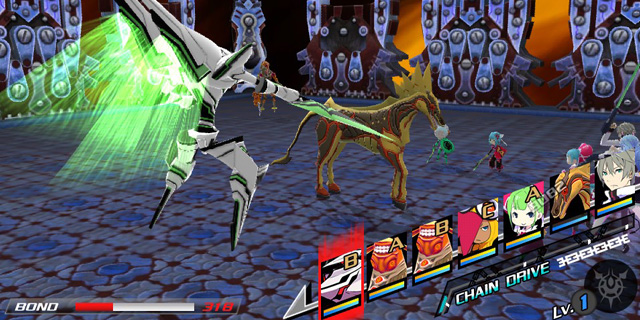
The battle mechanics of Conception II, at heart, are turn-based, with a four-region positioning system that is somewhat akin to a less-kinetic Panzer Dragoon Saga. This encourages the player to balance the risk of staying in harm’s way with the reward of scoring more damage against an enemy. The design of many enemy mob sets in most of the game reflects this, as a critical hit from both the player and your companions is often just enough to kill a more powerful enemy unit, but doing so puts both your groups in the same space, allowing another enemy to deal damage to both of you in one action. Moving one of your parties out of the way means you may not kill your target, but you may take less damage in the long run.
This is a good way of incorporating strategy, as placement becomes an important factor in defensive maneuvers. That said, beyond the fact that attacking an enemy’s back always scores a critical hit, positioning offers little strategy for offensive planning. Seeing more attacks that span multiple spaces and enemy zones would have been more engaging, as it would necessitate an even greater degree of spatial awareness.
Another weakness of the battle system is one that also pervades the entire game: the game chooses to front-load every single tutorial it has to offer, making the early-game segments frustrating and obtuse. Conception II’s battle system has a lot of variety, but not very much depth, as those options have little overlapping strategy or greater import. These ultimately inconsequential additions, compounded with the mountain of early-game tutorials, makes the battle system a chore to master. It is satisfying when you finally do start using the different options, but the only reason to do so is self-imposed variety.
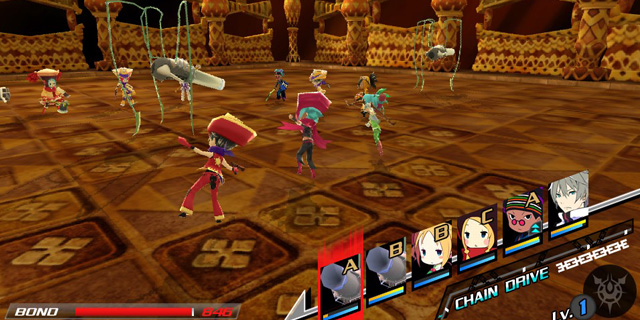
The aesthetics of Conception II come from a very specific single source of inspiration, one that is pervasive and highly evident throughout the entire experience. In both visual and sound design (and pretty much everything, save for arguably character design), the game desperately wants to be Persona. The bright neons with a particular focus on yellows and blues, the askew diagonally-aligned menu layouts, the vocal soundtrack tracks sung by a Japanese woman singing in English, the pseudo-symbolic dungeon designs… even the camera angles are kept at a familiar 45-degree angle.
Normally, I try not to say that a game is deliberately aping another game’s stylistic choices, but there is no avoiding it here. Conception II is very clear about its roots. In Persona, the aesthetic decisions made sense in the confines of the plot; the games were set (for the most part) in a realistic Japan, with normal teenagers. The punkish, uncanny style matched the characters’ ordinary world, contrasting with the distorted supernatural parallel to it. In Conception II, the world is very clearly all fantasy with some sci-fi elements thrown in, and even though it still takes place in what is essentially a high school, that essential sense of contrast no longer exists, as there is no baseline of normality. Everything is already fantastical, so it just doesn’t fit nearly as well.
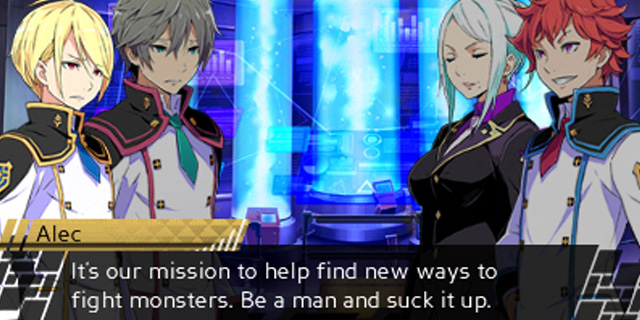
There’s one thing about Conception that’s very problematic on a fundamental level: the classmating system, and the unfortunate sexist baggage that comes with it. In short, classmating is the game’s system for creating new allies for battle, called “Star Children.” The way you do so is by conversing with your female classmates, and having implied intimate relations with them. There is no dancing around this issue; you are having (highly-abstracted and only implied) sex with underage high school girls so that their children can fight in battle with you. These mechanics were likely derived out of ignorance and not malice, but the extent to which is has affected the game is troubling, both for the developers and the industry as a whole.
I don’t necessarily see the actual implied meaning of classmating to be the real issue here; that would be acceptable if a believable emotional connection was established between two fleshed-out characters. Almost none of the characters ever evolve beyond the tired anime tropes that originally inspired them, and throughout the whole experience, they all become submissive, skittish, embarrassed clichés whenever you discuss classmating with them, despite it in the story being technically not sexual. The women you fight alongside with in the game simply have no interesting character traits or motivations that would have made this system okay. This is a very big problem, because it reduces their role to that of boob-jiggling (there’s a distressing amount of that in character animations) sex objects and baby machines. It’s gross, and it sets a worrisome precedent.
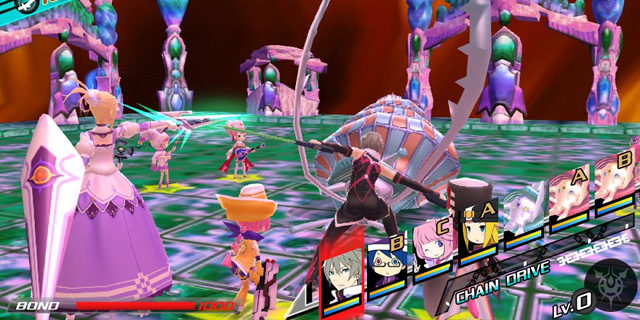
In a mechanical sense, Conception II is decent. The battle system has enough variety to ensure that there is always something new to try, even if that something has little greater strategy. The visuals are all very vibrant and fluid. There is a lot of possibility in the number of different Star Children, and you can choose between many combat partners outside of them as well. There is definitely enough to do in the game that you will not get bored anytime soon. The things the game is saying about women, though — intentionally or otherwise — are just embarrassingly crude and demeaning.
Pros: Solid battle system, lots of beautiful artwork, believable voice acting
Cons: Little attack strategy, shallow characters, questionable representation of women



















